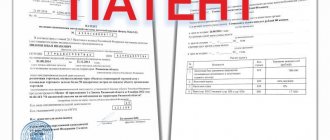Why is the balance sheet reformed?
The financial results of each organization during the reporting year are determined monthly.
This is required not only by the interests of persons using accounting data in their work, but also by the rules for closing cost accounts. The current financial result is formed on an accrual basis by adding to it data for the next closed month of the year. In accounting, it is reflected separately in an accounting account, different from the one that shows the financial results of work for previous years. This allows:
- control the process of generating financial results;
- analyze the ratio of its components;
- track its value without the influence of data from previous years.
However, at the end of the reporting year, its financial result must be added to the overall result of work for the entire period of the company’s existence, so that the new year begins with zero indicators in the accounting accounts of the current financial result. This is achieved by reforming the balance.
Reformation of the balance sheet with profit in 1C: Enterprise Accounting 8
Published 11/20/2018 1:41 pm Author: Administrator The financial result for each business transaction can be determined (or predicted) using final accounting entries, namely by closing the accounts where income/expenses were recorded and identifying the financial result. This is, in essence, a reformation of the balance sheet at the level of one business transaction. Thus, we can understand whether a specific business operation replenishes or “eats” the organization’s capital.
In the Russian accounting system, the balance sheet reformation is carried out at the end of the year on December 31 of the current (reporting) year in two stages:
STAGE 1
1.1. Closing (“zeroing”) subaccounts of account 90 “Sales” with internal postings.
During the year, subaccount 90.01 “Revenue” reflected income from the sale of goods, works and services.
On subaccount 90.02 “Cost of sales” - costs of production (sales) of products (works, services).
Every month we attributed the financial result from sales to subaccount 90.09 “Profit/loss from sales” and generated the financial result on account 99 “Profit and loss”
1.2. Closing (“zeroing”) subaccounts of account 91 “Other income and expenses” with internal postings.
During the year, subaccount 91.01 “Other income” accumulated income not related to the main activities of the organization.
Subaccount 91.02 “Other expenses” reflected expenses not related to the main activity.
Every month we determined the balance of other income and expenses in subaccount 91.09 “Balance of other income and expenses” and then attributed the resulting amount to the financial result (account 99 “Profits and losses”).
1.3. Closing (“zeroing”) subaccounts of account 99 “Profits and losses” with internal postings.
STAGE 2
2. Write-off of the financial result from account 99 “Profits and losses” to account 84 “Retained earnings (uncovered loss)”.
The financial result for the current reporting period is summed up with the total financial result for previous years, regardless of whether it is profit or loss, and is reflected in account 84 “Retained earnings (uncovered loss).”
The amount of net profit of the reporting year is credited to K-t subaccount 84.01 “Profit subject to distribution.”
Already next year, based on the decision of the owners, profit distribution is made. It implies:
— accrual of dividends (account 75 “Settlements with founders”);
— deductions to reserve funds (account 82 “Reserve capital”);
— replenishment of the authorized capital (account 80 “Authorized capital”), in this case the volume of the authorized capital must be greater than or equal to the volume of the organization’s net assets;
— coverage of losses from previous years (subaccount 84.02 “Loss subject to coverage”).
After these transactions are reflected, the balance of this subaccount is transferred to the credit of subaccount 84.03 “Retained earnings in circulation.”
The amount of the net loss of the reporting year is credited to D-subaccount 84.02 “Loss to be covered.”
Again, next year, based on the decision of the owners, a decision is made on the sources of covering the loss. It can be covered by accumulated retained earnings in circulation (subaccount 84.03 “Retained earnings in circulation”), reserve funds (account 82 “Reserve capital”) and additional contributions from owners.
We start the new tax period (year) from scratch, i.e. As of January 1, the income and expense accounts do not have a balance.
A special case.
Before the end of the calendar year, the balance sheet is reformed upon liquidation of the organization. At the same time, a liquidation balance sheet is compiled.
Why is the balance sheet reformation procedure needed?
The current financial result is formed on an accrual basis throughout the year by adding to it data for the next closed month. It is reflected separately in an accounting account different from the one that shows the financial result for previous years.
This allows the organization’s management to control the process of generating profit (or loss), analyze the ratio of components, and track the value of the financial result “in its pure form” without the influence of data from previous years on it.
What needs to be done before the balance sheet reformation?
Before closing the year, it is necessary to take an inventory of assets and liabilities. Discrepancies identified during the inventory must be reflected in the accounting registers as of the date of the inventory.
Moreover, this is not a right, but an obligation of the organization (Article 11 No. 402-FZ “On Accounting”). Compliance with this requirement will help owners, potential investors and other interested parties to correctly assess the financial efficiency of the enterprise, i.e. see how reliably the organization’s management manages the capital entrusted to it, and does it manage to increase this capital over time?
Let's look at how these operations will look in 1C: Enterprise Accounting 8, edition 3.0
The article Closing the year in 1C - balance sheet reformation provides a “photograph” of the balance sheet reformation. Let's take a more detailed look at this procedure.
Anatomy of the Reformation
REFORMING THE BALANCE WITH PROFIT
“Operations” - “Closing the month” - “Closing the current month (before reformation).”
In the example considered, the organization has no differences between accounting and tax accounting. To check, we compare accounting entries and the calculation of corporate income tax.
The current month's profit has been generated.
Let's reform the balance sheet. Due to the capabilities of the screen, reformation transactions will be presented in blocks.
STAGE 1
1.1 Closing (“zeroing”) subaccounts of account 90 “Sales” with internal postings.
1.2 Closing (“zeroing”) internal postings of subaccounts of account 91 “Other income and expenses”
1.3 Closing (“zeroing”) subaccounts of account 99 “Profits and losses” with internal postings.
Income tax generated by balance sheet reformation.
STAGE 2
2. Write-off of the financial result from account 99 “Profits and losses” to account 84 “Retained earnings (uncovered loss)”.
Net profit for the current period has been generated.
Owner's conclusion: the company operates with a growth mindset.
PS Dear colleagues, we will look at the specifics of reforming the balance sheet with a loss in one of the following articles.
PPS And for those who need motivation. “Concentrate your thoughts on the work at hand. The sun's rays won't set anything on fire unless they're focused."
Author of the article: Irina Kazmirchuk
Did you like the article? Subscribe to the newsletter for new materials
Add a comment
JComments
When to Reform the Balance Sheet
Due to its semantic purpose, the reformation of the balance sheet is the last accounting operation performed in the current year. Accordingly, it is carried out on the last day of the year - December 31.
However, there is 1 exception to this rule. At other times, the balance sheet is reformed if the company is liquidated before the end of the calendar year. The liquidation process is accompanied by the preparation of a liquidation balance sheet, which is subject to the general rules for the formation of this report, but is compiled on a different time frame.
For more information about the liquidation balance sheet, read the material “Liquidation balance sheet - an example of a zero balance sheet in the new form”.
Preparatory stage of the reformation
The balance sheet reform provides for the closure of accounts 90, 91, 99. At the same time, accounts 90 and 91 on which, in essence, a zero total result is recorded, since their subaccounts 90/9 and 91/9 accumulate throughout the year the amounts of profit (losses) from, accordingly, sales and other income/expenses should simply be reset to zero. Let us recall that the monthly generated current financial result is reflected in account 99 by writing off there the financial results generated in subaccounts 90/9 and 91/9.
Thus, balance reformation consists of 2 procedures:
- resetting data on accounts 90 and 91, which have a zero final balance, but contain figures that should be removed from these accounts;
- closing account 99, on which the financial result of the current year was generated, in order to add its value to the financial result of previous years.
Resetting the data available on accounts 90 and 91 is carried out by internal postings to these accounts, in which figures from all sub-accounts on the account are written off to sub-accounts 90/9 and 91/9.
Postings for balance sheet reformation in 2018
Db 91.1 Kd 91.9 - closing the sub-account for other income. — Db 91.1 Kd 91.2 — closing the subaccount. for accounting for other expenses. Account 99 The “Profit and Loss” account is used to form the final financial indicator of the enterprise’s activities for the entire reporting period. During this time, it reflects income and losses from normal types of activities, the balance of other expenses/income.
In addition, count. 99 fixes penalties and fines on fees and taxes, the amount of calculated profit tax and its recalculations. An important point: If an enterprise uses PBU 18/02, it cannot reflect the accrual of profit tax by recording on the Db account. 99 and CD count. 68. To calculate the amount of mandatory deductions for such a company, the conditional income/expenses should be adjusted.
At the same time, in accordance with clause 20 of the PBU, this indicator must be taken into account as a separate subaccount to the account of losses and receipts. In order to correctly reflect the possibilities for further business, it is necessary to conduct an accurate, comprehensive and high-quality analysis of business activities for the past reporting period. The finale of all operations of the financial year, which makes it possible to study the activities in the past period, whether it was profitable or unprofitable, is the reformation of the balance sheet. Next, we will study what transactions are formed during the balance sheet reformation. Closing accounts and carrying out balance sheet reformation Balance sheet reformation refers to the procedure for closing accounting accounts that contain information about financial results. The financial results of the enterprise are derived based on the closure of the account.
The final stage of the reformation
At the final stage, account 99 is closed. Let us recall that in this account, in addition to the financial results generated in correspondence with accounts 90 and 91, the following are taken into account:
- those who do not apply PBU 18/02 – the amount of accrued income tax;
- applying PBU 18/02 – the values of conditional income tax expense (income) and permanent tax liabilities.
Read about what kind of transactions when applying PBU 18/02 in accounting reflects the process of calculating the amount of income tax payable to the budget in the Ready-made solution from ConsultantPlus. If you do not already have access to this legal system, trial access is available for free.
The following may also be taken into account:
- income tax recalculations;
- accrued tax penalties.
The balance sheet reformation is completed by transactions writing off the data accumulated on account 99 to account 84.
Closing accounts for losses and profits of the organization
On account 99, which forms the final indicator of the functioning of the enterprise, during the current year profits and losses from ordinary types of activities, other receipts and disposals, the indicator of the calculated income tax payment, adjustments to the amount of tax, calculations of fines (for fees, taxes) are recorded.
For your information! A company using PBU 18/02 to reflect the accrued tax payment on profits does not use the operation on accounts 99 (Dt) and 68 (Kt), but adjusts the conditional tax expense/income accounted for in a special subaccount.
Account 99 is not closed, compared to account. 90, 91, during the year, the balance on it reflects the interim results of economic activity, while the credit balance at the end of the year indicates net profit, and the debit balance indicates damage.
The final operation (from the last day of December) on the account. 84, the net profit indicator is added (on credit) or a loss is entered (on debit):
Debit account 99 / Credit account 84 or Debit account. 84 / Credit account 99.
The balance of account 99 is reset to zero, and subaccounts opened additionally to it are also closed on the last day of December with internal entries to subaccount 99-9.
For your information! If necessary, to the account. 99 sub-accounts of different orders are created taking into account the indicators of the profit and loss reporting form.
For example, for a subaccount reflecting income/expenses before tax (s/ac. 99-1), the following subaccounts are allowed:
- for profit/losses from sales (s/account 99-1-1);
- for other receipts and disposals (s/account 99-1-2).
The reformation of a multi-level account is carried out in stages by transferring the balance of balances through internal postings to a sub-account of a higher order. The resulting balance (according to account 99-9) is transferred to the account. 84 in debit or credit depending on the result.
Balance sheet reformation: postings if profit is made
The accounting of LLC “Success” at the end of the year for account 99 reflects:
- subaccount 99/1 “Profits and losses” - 210,000 rubles. (credit balance);
- subaccount 99/2/1 “Conditional income tax expense” - 42,000 rubles. (debit balance);
- subaccount 99/2/3 “PNO” - 6,300 rubles. (debit balance).
When reforming the balance sheet, the postings will be as follows:
- Dt 99/1 Kt 99/2/1 - 42,000 rubles;
- Dt 99/1 Kt 99/2/3 — 6,300 rub.
The result formed as a result in subaccount 99/1 (210,000 – 42,000 – 6,300 = 161,700 rubles) will give the credit balance. Its write-off will reflect the last operation to reform the balance sheet - posting Dt 99/1 Kt 84 in the amount of 161,700 rubles, equal to the net profit for the reporting year.
How profit from sales is reflected in financial statements, see the Guide from ConsultantPlus. Trial access to the system can be obtained for free.
How to close account 90 at the end of the month
Contents Do it this way: a) the credit balance of subaccount 90-1 is closed by posting: Debit 90-1 Credit 90-9 – subaccount 90-1 is closed at the end of the year; b) debit balance of subaccounts 90-2, 90-3, 90-4, etc.
, except 90-9, are closed with transactions: Debit 90-9 Credit 90-2 (90-3, 90-4...) – subaccounts 90-2 (90-3, 90-4...) are closed at the end of the year. Example In 2012, Diana LLC received revenue from the sale of goods in the amount of RUB 1,770,000.
(including VAT - 270,000 rubles). The cost of goods sold was 900,000 rubles, the cost of selling goods was 255,000 rubles.
Diana's accountant made the following entries: Debit 62 Credit 90-1 – 1,770,000 rubles.
– revenue from the sale of goods is reflected; Debit 90-3 Credit 68 subaccount “VAT calculations” – 270,000 rubles. – VAT is charged; Debit 90-2 Credit 41 – 900,000 rub. – the cost of goods sold is written off; Debit 90-2 Credit 44 – 255,000 rub.
Attention Determination of monthly expenses Enterprise expenses are reflected in active accounts 20, 23, 25, 26, 44, etc.
- all these accounts have the common name “cost accounts”. Types of enterprise costs:
- Costs of auxiliary production;
- Production costs;
- Production costs, etc.
- General running costs;
Let’s say that the accounting of Buttercup LLC in January 2021 reflects the following transactions:
- Calculation of wages for workers in the workshop - 780,000 rubles;
- Depreciation charge for the month - 96,000 rubles;
- Products sold for the amount of RUB 1,062,000, incl.
VAT 162,000 rub. - The purchase from the service provider (electricity) is reflected - RUB 17,000. (without VAT);
- Payroll for administrative and management personnel - RUB 250,000;
The accountant reflects these transactions with postings: Dt Ct Description of transaction Amount, rub.
Dt and Kt. Account scheme 90: If Dt exceeds Kt, then the balance is reflected according to Kt 90.9.
That is, at the end of the period as a whole there should be no balance on account 90.
Closing the posting month and determining the financial result of Buttercup LLC for January: Dr Kt Description of transaction Amount, rub.
Balance sheet reformation: postings if a loss is received
The accounting of LLC “Success” at the end of the year for account 99 reflects:
- subaccount 99/1 “Profits and losses” - 210,000 rubles. (debit balance);
- subaccount 99/2/2 “Conditional income for income tax” - 42,000 rubles. (credit balance);
- subaccount 99/2/3 “PNO” - 6,300 rubles. (debit balance).
When reforming the balance sheet, the postings will be as follows:
- Dt 99/2/2 Kt 99/1 - 42,000 rubles;
- Dt 99/1 Kt 99/2/3 — 6,300 rub.
As a result, a debit balance in the amount of 174,300 rubles will be formed on subaccount 99/1.
(–210,000 + 42,000 – 6,300 = 174,300 rubles). It will be written off to account 84 by posting Dt 84 Kt 99/1 and reflect the amount of net loss for the reporting year.
Closing account 90 3 at the end of the posting month
Do it this way: a) the credit balance of subaccount 90-1 is closed by posting: Debit 90-1 Credit 90-9 – subaccount 90-1 is closed at the end of the year; b) the debit balance of subaccounts 90-2, 90-3, 90-4, etc., except 90-9, is closed with transactions: Debit 90-9 Credit 90-2 (90-3, 90-4...) – subaccounts 90 are closed -2 (90-3, 90-4...) at the end of the year.
Example In 2012, Diana LLC received revenue from the sale of goods in the amount of RUB 1,770,000.
(including VAT - 270,000 rubles). The cost of goods sold was 900,000 rubles, the cost of selling goods was 255,000 rubles. Diana's accountant made the following entries: Debit 62 Credit 90-1 – 1,770,000 rubles.
– revenue from the sale of goods is reflected; Debit 90-3 Credit 68 subaccount “VAT calculations” – 270,000 rubles. – VAT is charged; Debit 90-2 Credit 41 – 900,000 rub.
– the cost of goods sold is written off; Debit 90-2 Credit 44 – 255,000 rub.
Attention Determination of monthly expenses Enterprise expenses are reflected in active accounts 20, 23, 25, 26, 44, etc.
- all these accounts have the common name “cost accounts”.
Types of enterprise costs:
- Production costs;
- General running costs;
- Costs of auxiliary production;
- Production costs, etc.
Let’s say that the accounting of Buttercup LLC in January 2021 reflects the following transactions:
- The purchase from the service provider (electricity) is reflected - RUB 17,000.
(without VAT); - Products sold for the amount of RUB 1,062,000, incl. VAT 162,000 rub.
- Depreciation charge for the month - 96,000 rubles;
- Payroll for administrative and management personnel - RUB 250,000;
- Calculation of wages for workers in the workshop - 780,000 rubles;
The accountant reflects these transactions with postings: Dt Ct Description of transaction Amount, rub.
Dt and Kt. Account scheme 90: If Dt exceeds Kt, then the balance is reflected according to Kt 90.9. That is, at the end of the period as a whole there should be no balance on account 90. Closing the posting month and determining the financial result of Buttercup LLC for January: Dr Kt Description of transaction Amount, rub.
Tax nuances when reforming the balance sheet
Due to differences in the recognition of income and expenses in accounting and tax accounting, the following situation is possible: according to tax accounting data, the company’s activities are unprofitable, but in accounting there is a profit.
In this case, the amount of income tax cannot be negative, and in this case there is no income tax (no profit - no tax). According to the law, the resulting tax loss can be taken into account over the next 10 years (Article 283 of the Tax Code of the Russian Federation).
In the described situation, the accountant will have to record a deferred tax asset as of December 31. It is easy to calculate: the amount of the tax loss should be multiplied by the income tax rate. You need to make an entry for the amount received: Dt 09 Kt 68.
As a result, the amount of accrued income tax becomes zero, and there are no discrepancies between tax accounting and financial statements.
About the rules for transferring losses and the restrictions that apply, read the material “How and for how long can losses be carried forward?” .
Results
Balance sheet reformation is a process that leads to the resetting of data on accounts 90, 91 and 99. The first 2 accounts, which have a zero final balance due to the rules for forming the figures reflected on them, are closed with internal postings.
Account 99 is closed using internal entries that close the analytics for it at the expense of the overall financial result, and a final entry that writes off the amount of net profit (loss) to account 84. You can find more complete information on the topic in ConsultantPlus. Free trial access to the system for 2 days.
Account 90 “sales” accounting and postings
This is a passive subaccount; 90.2 - “Cost of sales” - active subaccount, reflects the cost of goods sold; 90.3 - “VAT on sales” - an active sub-account and in correspondence with account 68 reflects the amount of VAT accrued to the budget; 90.4 - “Excise taxes” - excise taxes included in the amount of goods sold are reflected here; 90.5 - “Export duties”; 90.7.1 - “Sale expenses for activities with the main taxation system”; 90.7.2 - “Sale expenses for certain types of activities with a special taxation procedure”; 90.8.1 - “Administrative expenses for activities with the main taxation system”; 90.8.2 - “Administrative expenses for certain types of activities with a special taxation procedure”; 90.9 - “Profit (loss) from sales.” All other subaccounts are closed to this subaccount.
The organization itself chooses the method and consolidates it in its accounting policy. Let's consider both options for closing the cost price for the data of Lyutik LLC. Postings for closing expense accounts at the end of the month when using the write-off of costs for direct expenses: Dr Cr Description of transaction Amount, rub. Document 20 26 Closing for production costs 250,000 Accounting certificate 90.2 20 Closing the account for cost (250,000+96,000+780,000+17,000) 1,143,000 Accounting certificate Postings when writing off costs using the direct costing method: Dt Ct Description of the transaction Amount, rub.
Document 90.8 26 Write-off of general business expenses 250,000 Accounting. certificate 90.2 20 Write-off of production costs (96,000+ 780,000+17,000) 893,000 Accounting. certificate Closing account 90 posting: Dt Cr Description of transaction Amount, rub. Document 90.9 90.2 Expenses written off (1,143,000+893,000+400,000+162,000) 2,598,000 Accounting.








